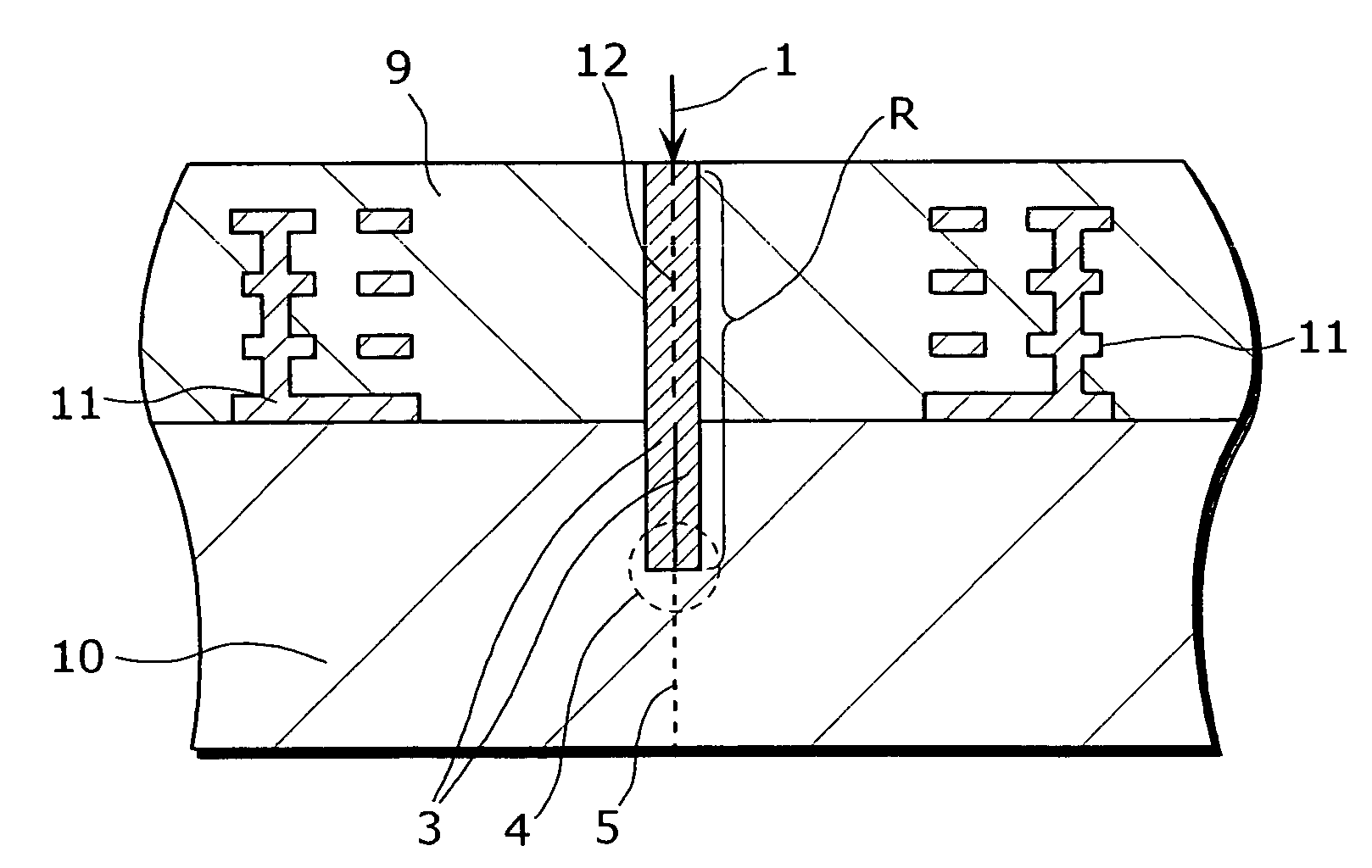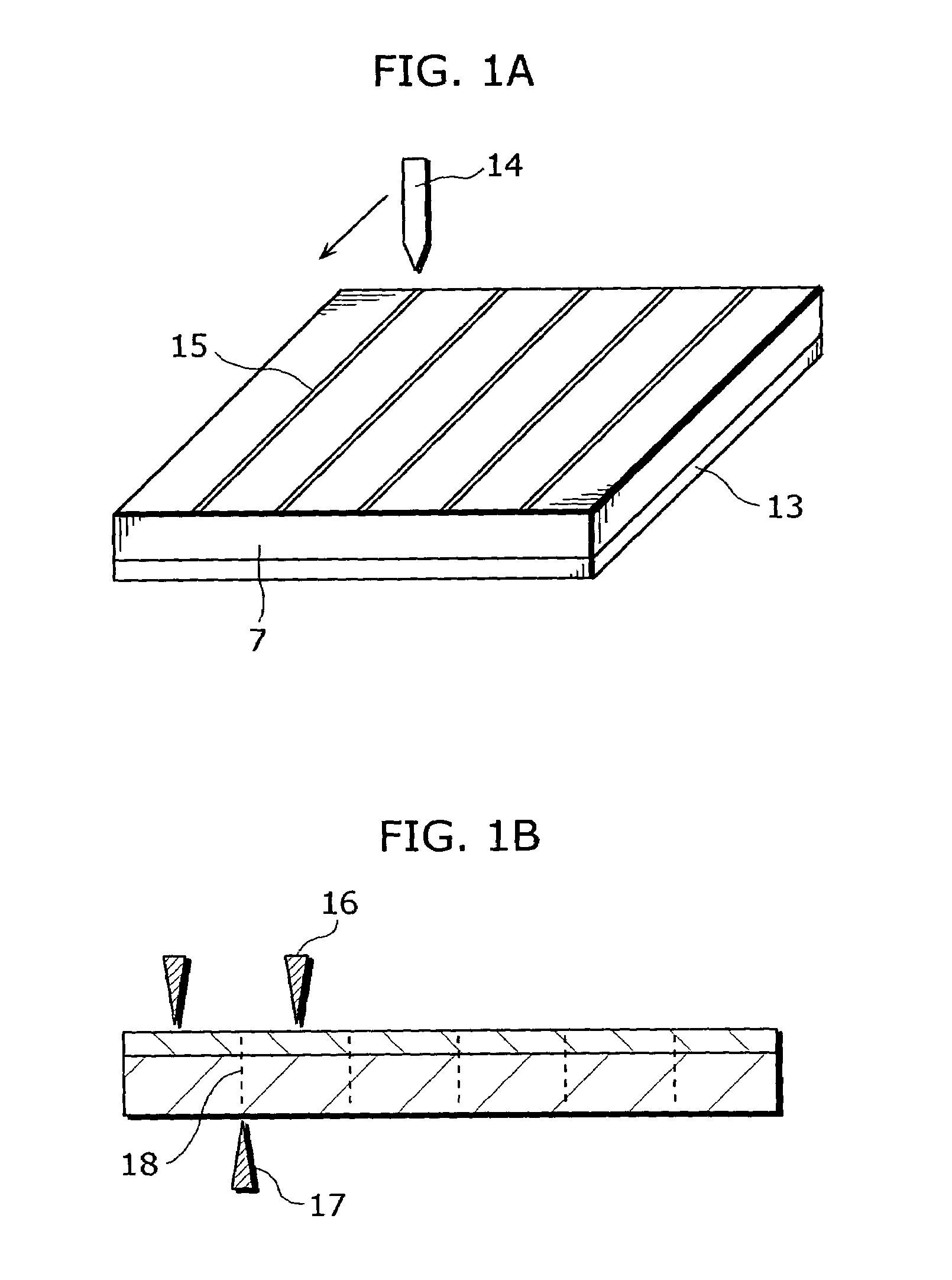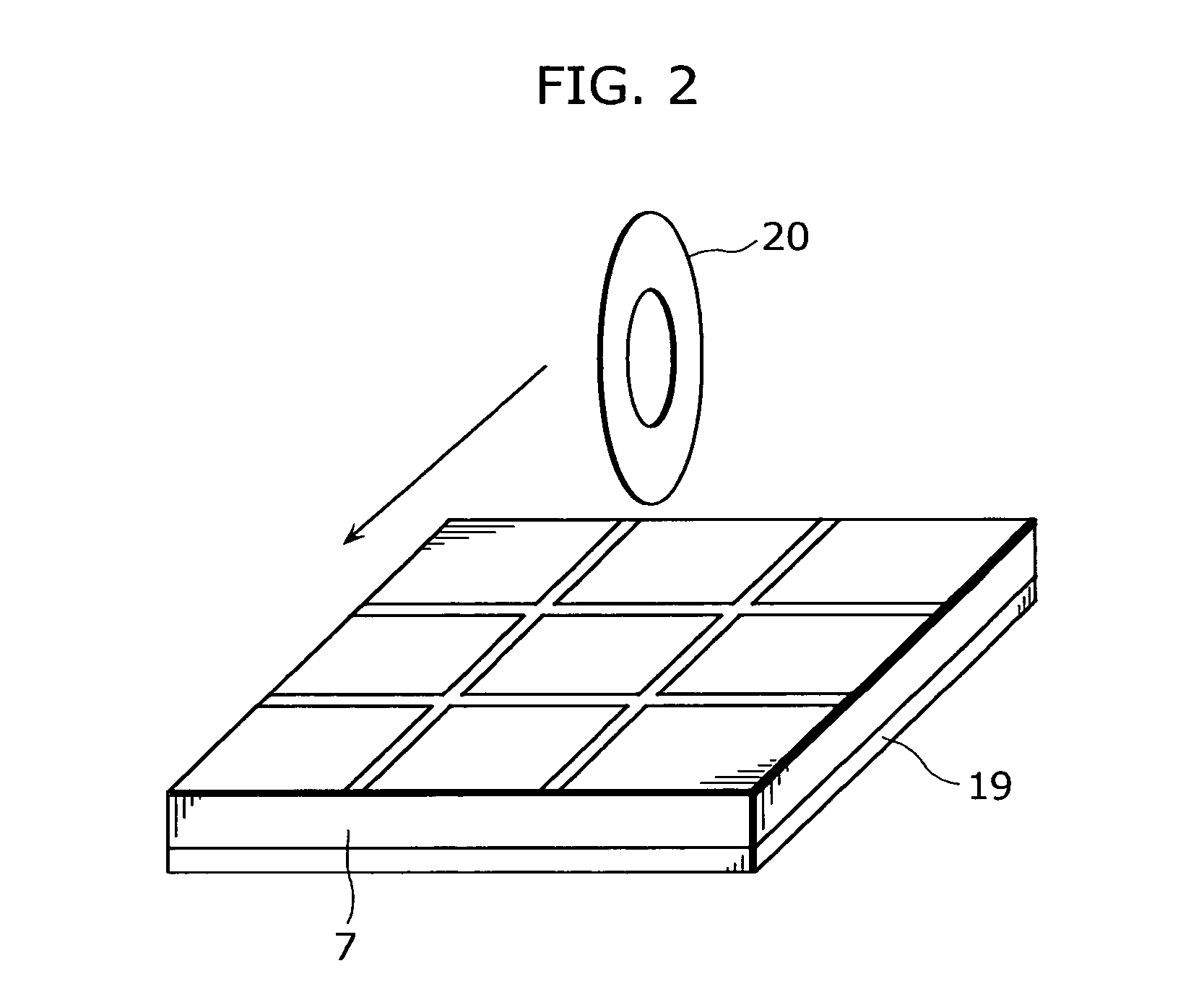Method for dividing substrate
a substrate and dividing technology, applied in the direction of lasers, semiconductor laser structural details, semiconductor lasers, etc., can solve the problems of increasing the cost of chips, reducing the total number of chips obtained from one substrate, and frequent occurrence of chip breaking, so as to achieve low cost and high yield. , the effect of low cos
- Summary
- Abstract
- Description
- Claims
- Application Information
AI Technical Summary
Benefits of technology
Problems solved by technology
Method used
Image
Examples
first embodiment
[0071]FIG. 3 is a cross-sectional view showing a method for cleaving a nitride semiconductor substrate according to the first embodiment of the present invention. Referring to FIG. 3 to FIG. 9, a description is given below of a condition for electron beam irradiation that allows all cleaved facets to be formed flat.
[0072]As shown in FIG. 3, an electron beam 1 is irradiated to a substrate surface 2 of a nitride semiconductor substrate under an irradiation condition made up of an acceleration voltage Vb, a beam current Ib, and an electron beam energy Eb. In this case, a beam radius that depends on the above irradiation condition is db. The electron beam 1 reaches the full depth of a projected range R from the substrate surface 2. This projected range R is defined by the depth from the substrate surface 2 to the position at which the electron strength becomes 0. In this case, since the acceleration voltage of the electron beam 1 to be irradiated is a relatively low acceleration voltage...
second embodiment
[0084]FIG. 10 is a cross-sectional view showing a method for cleaving a nitride semiconductor substrate according to the second embodiment of the present invention.
[0085]As shown in FIG. 10, an electron beam 1 is irradiated to the front surface of a nitride semiconductor substrate made up of a sapphire substrate 7 and a GaN-based semiconductor thin film 6 formed on such sapphire substrate 7. The GaN-based semiconductor thin film 6 forms, for example, a semiconductor laser element or a light-emitting diode. Note that an electrode or the like may be previously formed on the GaN-based semiconductor thin film 6. The present embodiment has a structure in which the projected range R of the electron beam 1 reaches inside the sapphire substrate 7 located under the GaN-based semiconductor thin film 6 and cleavage as described in the first embodiment starts from the sapphire substrate 7. Although there occurs a crack in the GaN-based semiconductor thin film 6 even in the case where the electr...
third embodiment
[0086]FIG. 11 is a cross-sectional view showing a method for cleaving a nitride semiconductor substrate according to the third embodiment of the present invention.
[0087]As shown in FIG. 11, an electron beam 1 is irradiated to the front surface of a nitride semiconductor substrate made up of a sapphire substrate 7 and a GaN-based semiconductor thin film 6 formed on such sapphire substrate 7. The GaN-based semiconductor thin film 6 forms, for example, a semiconductor laser element or a light-emitting diode. Note that an electrode or the like may be previously formed on the GaN-based semiconductor thin film 6. The electron beam 1 is irradiated from the front surface of the GaN-based semiconductor thin film 6 in the second embodiment, but the present embodiment has a structure in which the nitride semiconductor substrate is cleaved by irradiating the electron beam 1 from the side of the sapphire substrate 7. Since the electron beam 1 is not irradiated from the side of the GaN-based semi...
PUM
 Login to View More
Login to View More Abstract
Description
Claims
Application Information
 Login to View More
Login to View More - R&D
- Intellectual Property
- Life Sciences
- Materials
- Tech Scout
- Unparalleled Data Quality
- Higher Quality Content
- 60% Fewer Hallucinations
Browse by: Latest US Patents, China's latest patents, Technical Efficacy Thesaurus, Application Domain, Technology Topic, Popular Technical Reports.
© 2025 PatSnap. All rights reserved.Legal|Privacy policy|Modern Slavery Act Transparency Statement|Sitemap|About US| Contact US: help@patsnap.com



